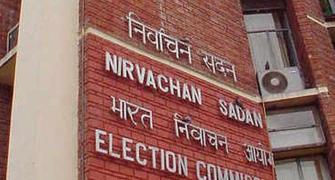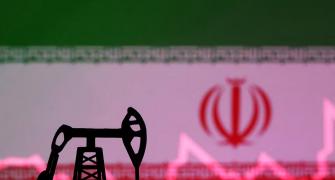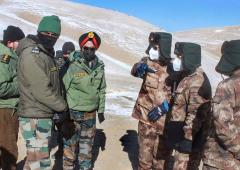This is the second of a four-part series on the DRDO, which has instituted fundamental changes in the way it will approach equipment development.
Part I: New DRDO: An engagement with the military
It was a typical Defence Research and Development Organisation press conference, at the Aero India 2007 show in Bangalore in February 2007. Brushing off questions about the Light Combat Aircraft that had already been 24 years in the making, DRDO chief M Natarajan announced a clearly unachievable 15-year target for building an even more high-tech Medium Combat Aircraft, advanced trainer jets, and a fleet of Unmanned Combat Aerial Vehicles that will fly without pilots to fight aerial battles by remote control. Most experts agreed this was science fiction without the science.
But now the DRDO is bringing back the science. Steering away from ambitious targets, the DRDO has decided to announce new programmes only after completing the development of all the technologies that underpin them. After bruising criticism from the military, the media and parliamentary bodies, the DRDO is fundamentally changing the way it does business.
In the series of exclusive interviews granted to Business Standard by the DRDO's top scientists, there is a clear realisation of the damage caused by failing to meet the huge expectations generated by A P J Abdul Kalam (DRDO chief through most of the 1990s) for programmes like the Integrated Guided Missile Development Programme, the LCA programme and the Arjun tank.
The blame for this failure, say DRDO scientists, lay with being caught short of technology by the Missile Technology Control Regime, which placed tight sanctions on India from 1988-89 onwards. The Akash system, to name just one, was delayed for years, because they unexpectedly found themselves having to engineer crucial radar components, which they had hoped would be available from the international market.
"Today, there is a shift from purely building systems, to equally focusing on creating the technologies of the future," explains V K Saraswat, the DRDO's chief controller of missiles and strategic systems, who oversees key programmes like the Agni ballistic missile and the Anti-Ballistic Missile system.
"When there is a limited focus on a particular programme, generic technology development takes a back seat. But no organisation can sustain future growth unless you have built technologies for the future systems which are going to emerge."
To boost technology development, the DRDO has organised its laboratories in 'clusters', each cluster developing a particular kind of equipment, eg missiles, aeronautics, or life sciences. Within each cluster, some laboratories develop weapons programmes, while at least one laboratory focuses exclusively on developing technology for the others in that cluster.
In the missile complex in Hyderabad, for instance, the Defence R&D Laboratory and the Advanced Systems Laboratory develop India's entire range of missiles. Meanwhile, a third laboratory, Research Centre, Imarat concentrates exclusively on developing crucial missile technologies, eg ring laser gyroscopes for the navigation systems of a ballistic missile that must accurately hit targets 3,500 kilometres away.
The missiles that will run on these technologies will only be announced after the technologies are perfected. Saraswat admits he is working on a 5,000-kilometre range Agni-5 missile, with multiple warheads that can manoeuvre and send out decoys to confuse enemy anti-missile defences. But the DRDO, he says, will only announce that programme, and ask the government for funding, when all the technologies are in place.
The DRDO is accumulating technology not just from its laboratories, but from a range of establishments across the country: IITs, universities, and government and private science and technology establishments. Nobody will admit it on record, but even India's space programme indirectly validates key DRDO technologies. The recent launch of 10 satellites from the PSLV-C9 rocket is not dissimilar to launching decoy warheads from a military ballistic missile.
For now, the optimistic announcements of Aero India 2007 have been shelved, while DRDO laboratories work on the technologies that will power those complex systems. Dipankar Banerjee, chief controller, aeronautics and materials sciences, says the MCA has not even reached the 'concept studies' stage yet. And the technologies that will go into the UCAV are still being worked upon.
Banerjee explains, "We need to mature the technologies (for the UCAV) first. Only then can we go to the Indian Air Force with a proposal. We don't want the entire project to become hostage to one technology that gets held up."
The DRDO has clearly decided that developing technologies is at least as important as developing weapons systems. V K Aatre, DRDO chief from 2000-04, had said, "Weapons programmes and technologies have to maintain equal pace." Only now is the DRDO heeding his advice.
Part III: DRDO's plan for an eye in the sky






